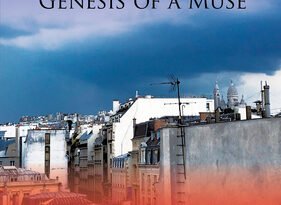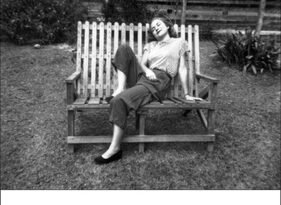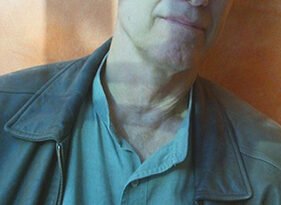The Structure of Desire
By W.F. Lantry
(Paperback, 7 X 10, $19.95, 170 pages)($19.95, (7″ X 10″), 170 Pages, with 8 beautiful paintings)

Winner of the Nautilus Book Award. This wonderful book of love poetry by W.F. Lantry, in a unique form of his own invention, is dedicated to his wife, Kate, otherwise, known as the Miranda: the miraculous being, protean changeling, and coloratura soprano, but insists she’s “just a mortal woman.”
REVIEWS
“W.F. Lantry’s long-awaited first full-length collection The Structure of Desire is a poetry of “transport,” in which everyday moments expand into mystic significance at the prompting of beauty in the form of a person, a dance or music. He reads as he writes, with each word thick with import, as if his poems were sacred texts. “Spiritual” poetry has been much discussed of late. If it does come back into vogue, I hope that its practitioners will follow Mr. Lantry’s (and Mr. Stevens’) example by grounding their ecstasies in realia. Mr. Lantry’s recurring images–the dance, the mirror, sinuous drapery–never emerge from some vague poetic subconscious but from his visions of the world around him. As a poet of rapture, he writes poetry dear to my heart. I recommend this book to all who enjoy mind-expanding mystical poetry and anyone who wants to be reminded what the selfless, helpless sort of love feels like.
—Aaron Poochigian, poet, translator, author of The Cosmic Purr and Sappho -Stung with Love: Poems and Fragments
W.F. Lantry’s poems are so heartfelt, sensual, and beautiful that they leave me breathless. This book is an emotional, tender book that just sings. The Structure of Desire should be on everyone’s reading list. This poet, this writing, a gift.
—Gloria Mindock, editor, Cervena Barva Press, author of Nothing Divine Here.
This beautifully realized book, The Structure of Desire, includes a prologue and chapter introductions by Mr. Lantry, over a hundred poems, and Pre-Raphaelite paintings, printed in black and white, as a frontispiece for each chapter. The love poems take us on a gentle, sensuous journey through a land of silk and pearls, lace and candlelight, song and mystery. I like best the poems in which the author leaves interior rooms and writes about struggles to tame nature for his gardens, walks along riverbanks or through forests, and time spent in his workshop where he fashions wood and teaches his son. There is grit, hard work, and striving in this volume, along with the good wine, the fine fabrics. This author takes exquisite care with his work, and there is much in this volume for each of us to enjoy.
—Nonnie Augustine, poetry editor of The Linnets Wings, author of One Day Tells its Tale to Another
With his formal curriculum well in hand, and technical tools sharpened, nothing could surpass or replace the immediacy of the authenticity of W.F. Lantry finding his ultimate muse: Miranda. She is the idée fixe that powers his drive to capture her presence in the de-incarnate wind or fleeting spark of a lover’s glance. Moments such as these permeate his collection The Structure of Desire. Great loves and talent have always found echoes and correspondences of each other in other art forms and other artists. This book is an excellent example of this landscape.
—Jean-Yves Solinga, author of Clair-Obscur of the Soul, Words Made of Silk, Landscape of Envies, In the Shade of a Flower, and Impressions of Reality.
“Desire” is a lush and beautiful word that encompasses many feelings, paths, wishes, dreams, the land and landscape, the sea, and all that we know of life and hope to know of the mystical life. Poet W.F. Lantry understands Desire at its core. The poems in The Structure of Desire come to the reader as a rare kind of gift. You don’t have to be a poet or even an avid poetry reader to sink into this book.
– Susan Tepper, author of From the Umberplatzen and Deer & Other Stories.
PROLOGUE

Miranda:– A miraculous being, whose existence could be neither imagined nor predicted, who insists she’s “just a mortal woman.” A protean changeling, whose transformations, if revealed, would mystify the most jaded skeptic. The center of a whirlwind. A coloratura soprano. Also, by the grace of providence, my wife
All the attributes of Miranda are measured in circular forms. Her waist is a meridian, her bracelet an orbit of light. In the rushed luminosity of dawn, in the declining radiance of an autumn evening, when the voices of birds are falling around us, and the owls begin moving in silence between the unclothed branches, the echoes of her singing voice move out in infinite circles. A ring constrains even her finger
And the liquid sequences of her notes are like the fluid records of a stone skipped dexterously across a pond. The closest circle widens as the stone moves off to make another, another, all the way to the opposite bank, where it settles into silence. We can watch the circles widening, note the harmony of their continuous pattern, the straight line their centers describe, but they are always rings overlapping rings, each a small vortex of sound, a corona of notes both performed and heard. Through her breath, we pass into breathlessness, aroused and composed by her voice. When the tempo slows, when the voice moves up her scale as the dawn light moves across our earth, or as the stars move in circles through the darkening air, we long to be one of those night birds, with their secret wings, climbing along on the waves of her sound, disappearing into what has always been.
The sensuous joy of our listening, the miracle we newly sense of simply being able to hear such delight, reminds us there was a time when we knew only silence, and makes us regret that time will come again. Its beauty teaches the rapture of a particular moment, makes us desire to dwell within her space now, and in the next moment, and the next, each note a bound moment of the eternal, caught within her lips and shaped to the forms of our elations.
Driven beyond accomplishment or artistry, the trained expertise and the physics of resonate air, part of us still measures the singular rhythm, the practiced pitch of exactness, the way the tone moves from one place to the next, the way a hummingbird’s wings beat in precise orbits, each feather moved by particular muscles, all of them working as one.
We have all heard Panis Angelicus, how many times, and Pie Jesu, and yet in her voice it becomes new, as if it were composed in that moment, from eternal lips to hers, infinite now in our present, and in memory imprinted as if by woodblock, or engraving, as if a lithograph could bear its lines unchanging. Her voice is the sharpened burin, and we the copper plate. And if the paper is pressed against us, how could we resist replicating her form, or remaking the mark it has left in our flesh?
I have heard the learned men standing outside the Basilica, on the steps near those statues, discussing her phrasing, analyzing the pulsing undulations of her song, unable to capture in eloquent syntax even the tenth part of enduring emotion she calls with such ease to the air. Better to remember the weeping of women in the pews, my own weeping as I listened, the joy and anguish of feeling her openness, her presence among us, there on the raised dais, her arms spread wide to gather us into the flames she inhabits, and which burn within her untended.
Only surrounded by mosaic walls is she fully herself, only when her voice lingers around the marble columns lit by rose windows, her face glowing in the tinted light, the wind singing through her in windless space, does she become the one voice, her singular inflections lifting us above the incense of mourning, as if we were particles of smoke, roiled on the currents of sound moving through her, the light down of doves floating near transept arches.
And yet, we hear her words written within us. Whatever song she sings, the terms of the Lacrymosa, our sadness caught within them, like the sadness of all who have suffered. There is no comfort, but there is no despair, our sorrows made crystalline, constant but faceted, as if her voice could cleft their rough edges, and preserve beauty within loss.
So we move on, always caught in that moment, as the next song begins, unable to remember what came before, or what would follow, we live inside her and she in us, the first stanza, the following refrain. Unable to believe there could be a next moment, longing that each be the one, and endure, and yet longing to hear the grace of transition, for part of the joy is in harmony, the stone skipping, the circles merging on the water’s surface, a mirror of all we’ve become, and everything we desire to be.
For the laid out body once had such desires, before the incense was lit, before the elegant wood was cut, and planed down by hand, before it was sanded and finished, and rough hands polished its flanks. Those feet, so still now, once ran towards a consuming passion, the lips, silent now as a stone beneath water, once spoke of a beauty like hers. And the corpse, dressed in such clothes as it wore on the brightest occasions, now is anointed with small waterdrops, and the same drops are flung into the pews, to remind us. And she goes on singing like the endless sea, or like a woman walking beside it, the spaced breakers her background chant.
Perhaps because she knows the breakers will continue? How else could she go on? Now the doors open, as her voice rises. Now the people stand, invited by her lifting arms, now they turn and watch the procession go past. The steps of the bearers match her slow rhythm. They move through the doors, and into sunlight.
But I am standing in the darkest corner, still listening. All I possess are the shadows. She gathers up the sheets of her music, and walks towards me in silence.




